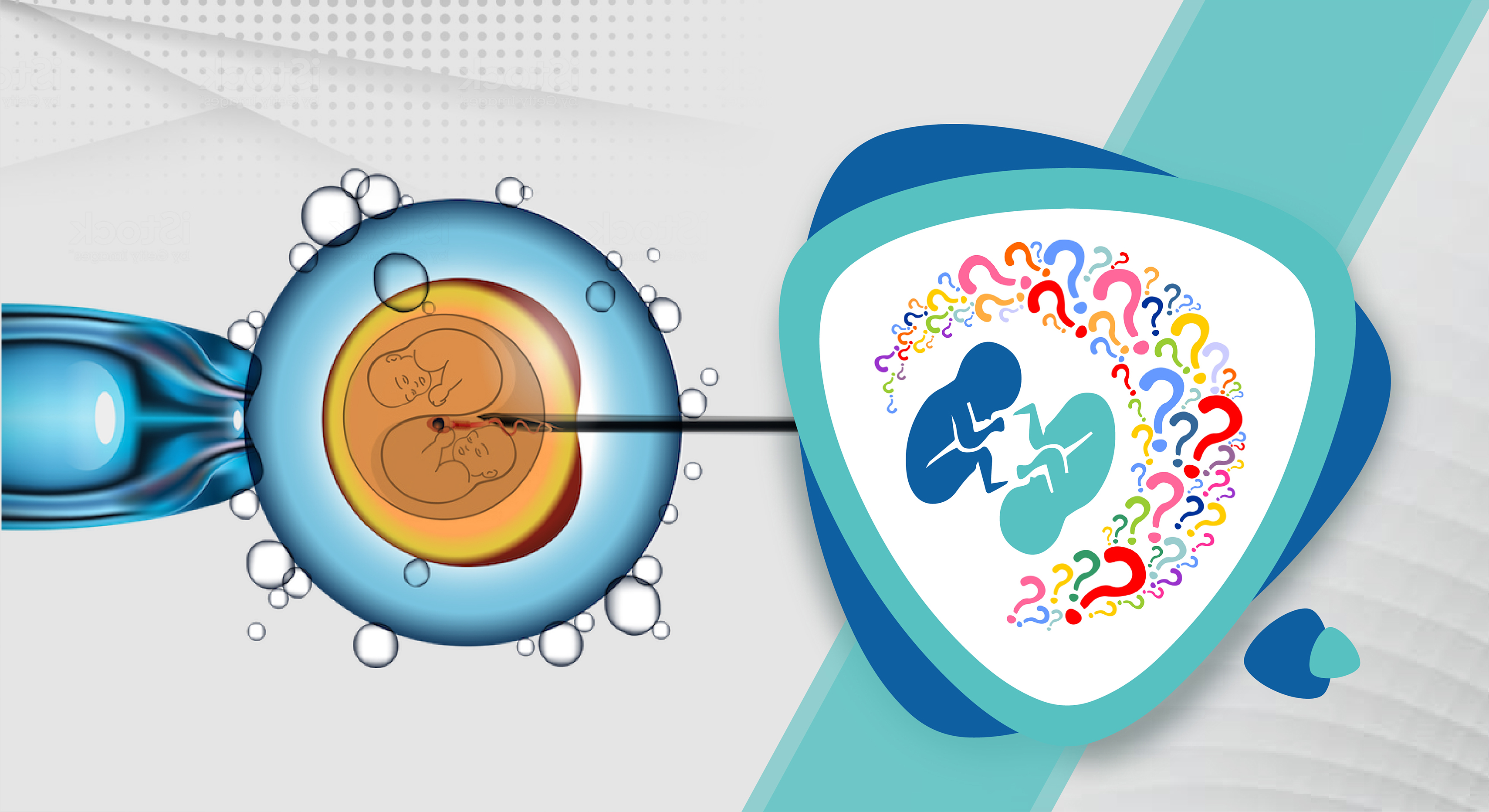Infertility and IVF are among the most discussed topics between married couples. One out of every ten couples is believed to face infertility at some point in their reproductive years. In Vitro Fertilization (IVF) is like a boon in the lives of infertile couples. It is among the most common methods of assisted reproductive treatments (ART) to have been undergone by the couple. IVF is a widely popular and viable treatment, but it also has certain uncertainties. One such uncertainty in IVF is the probability of twins with IVF.
The significant uncertainty and concern that couples face are IVF twins. In many cases of multiple embryos or single embryo transfer, there's an uncertainty of IVF twins, with the risk being more in the former one. Many countries have even made it a punishable offense to transfer multiple embryos, due to health risks it has. On the other hand, many people demand to have twins with IVF. IVF has proved to have resulted in more possibilities of twins than in the method of natural conception.
Different reasons through which twins with IVF are possible:
IVF and twins' success can be planned as well as unplanned. This is the reason why twins with IVF are often uncertain surprises. The reasons are:
-
Multiple Embryo Transfer- In this, more than one fertilized egg is transferred in the female. The embryo can be a fresh one or a previous frozen and thawed. As there's more than one embryo, there can be a chance of more than one embryo attaching to the uterus and resulting in pregnancy. It is often done to increase the chances of embryo attachment, as embryos might have failed to have attached in previous IVF cycles. When two different embryos attach to the uterus, they result in multiple pregnancies, and eventually dizygotic (unidentical twins).
-
Zygotic splitting- This is a very natural process, which results in unintentional multiple pregnancies. A zygote is formed when an egg gets fertilized through a sperm. This fertilized egg then goes on multiplying to more cells and forms an embryo. The zygote is the point between an embryo and a fertilized cell. Zygote takes two to six days to develop onto an embryo, sometimes the process is continuing, but embryo transfer takes place. As zygote has all the necessary material from both the parents, it sometimes divides itself into two or rarely three parts, which results in monozygotic twins/triplets.
-
Coitus after embryo transfer- Many times, couples indulge in coitus after having an embryo(s) transfer. If the female would have been ovulating, then unprotected coitus might result in pregnancy. This happens very rarely, though, as the couple was termed infertile, that's why they opted for IVF. It is a rare coincidence, but has happened and results in dizygotic twins. Note that, it is strictly unadvised to indulge in protected or unprotected coitus during any stage IVF cycle till the pregnancy is announced.
Rare Cases Of Multiple Pregnancies
It is always important to remember that multiple pregnancies rarely happen. During IVF, because of various methods, there are different chances of having multiple pregnancies, but all are still low. Now there are some other scenarios of IVF twins, which are among the rarest cases. There are cases in which the single transferred embryo might divide itself into three different parts and result in a triplet. Then in case of transfer of multiple embryos, where more than two embryos might also attach to the uterus.
In one such case, a natural embryo, formed by unprotected coitus after embryo transfer attaches to the uterus while the embryo from IVF divides itself. It will result in more than two fetuses. It is a case of having identical twins with an unidentical triplet. This can be noticed during ultrasound scans only. To differentiate such a case from a monozygotic triplet, the doctor will check the number of gestational sacs and fetuses. During such an instance, a mother will have three fetuses but two gestational sacs only. This can also happen if, during multiple embryo transfer, one embryo divides, while another embryo also attaches.
Many countries have strict rules for embryo transfer due to complications caused by multiple pregnancies. Still, in many situations, doctors have to go with multiple embryos transfer. In India, there are no strict laws, but doctors will advise single embryo transfer unless there's no special need for the same. Multiple pregnancies are risky for women, as they have to take care of more than one baby's nutrition. Multiple pregnancies are often not advised as it can cause several complications for both mother and children.
Risks Associated With Multiple Pregnancies
Premature Delivery- Many twins and nearly most of the higher-order multiples are premature (born before 37 weeks). Higher the number of fetuses, the greater the risk of early birth. In premature deliveries, babies are always born with partial or incomplete formation of the bodies and organ systems. These babies are often small, with low birth weights, and may need artificial assistance for breathing, eating, fighting infection, and staying warm. Babies born before twenty weeks are most vulnerable.
- Gestational Hypertension- During pregnancy, there's always a risk of high blood pressure for women. This only worsens with the number of fetuses. This is a risk in pregnancy because high blood pressure can increase the chance of placental abruption.
- Anemia- It is a condition in which blood doesn't carry enough healthy red blood cells, so tissues don't receive enough oxygen. During pregnancy, your body has to produce more blood, and more fetuses mean more blood requirements. Thus this can create pressure on the body, and without proper intake of iron, it can result in severe anemia.
- Congenital Disabilities- In today's life, when mothers themselves face nutritional deficiencies or are rarely in proper health, multiple pregnancies are very risky for the children. A woman's body needs to provide several enzymes and hormones in adequate measures to ensure that children have high nutrition. Fetuses due to this and several natural reasons remain undeveloped or are born with congenital disabilities.
- Miscarriage- Due to unavoidable reasons, there's a phenomenon called the vanishing twin syndrome. In this, one fetus lives on while the other one is miscarried. Often, there's no reason or cause found for this, and medical experts are trying to know more about it. It usually happens during the first trimester, and may or may not be accompanied by bleeding.
- Twin-to-twin Transfusion Syndrome (TTTS)- It is a condition in which blood vessels connect within the placenta and divert blood from one fetus to the other. It occurs in up to twenty percent of twins who share a placenta, and blood is shunted from one fetus to another. Over time, the recipient fetus receives too much blood, which results in overload on the cardiovascular system, and too much amniotic fluid develops. The smaller donor fetus does not get enough blood and has low amounts of amniotic fluid.
- Cesarean Delivery- In the case of multiple pregnancies, fetuses often take abnormal positions, which adds to the chances of cesarean birth or c-section. Cesarean deliveries always carry risks with it like blood loss, infections, and a lot more.
After considering all the above points, one can easily make out why doctors advise a single embryo transfer. In the case of women around forty years of age or more, they suggest multiple embryo transfer. In some other rare cases also, they might suggest multiple embryo transfers to the couple. Still, there's a rising trend in the industry regarding IVF twins. Doctors take various tests and advise the couple to fulfill their dream of having twins or not. Overall, having multiple pregnancies, whether for IVF or natural conception, takes a toll on a woman's body, and if the couple goes forwards with it, the female's nutritional needs, rest, pregnancy requirements, and other such factors should be thoroughly met.?????



 IVF Centers
IVF Centers IVF Doctors
IVF Doctors Joint Replacement
Joint Replacement Spine Surgeries
Spine Surgeries Dental
Dental Slimming/Weight Loss Clinics
Slimming/Weight Loss Clinics Hair Transplant Clinics
Hair Transplant Clinics Physiotherapy clinics
Physiotherapy clinics
 Search
Search





